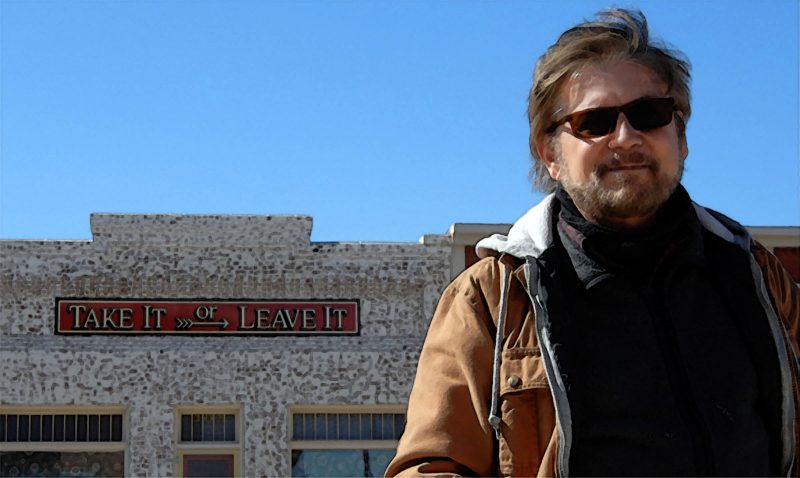
NOTE: After 2 1/2 months of this, I’d almost rather eat Brussel Sprouts than write about COVID-19. Like many of you, I am conflicted and tired and frustrated and scared and angry. Sometimes I even think that God is just playing a joke on us, testing our collective sense of humor. Nothing I write below, other than the hard historical facts, are opinions or convictions I hold unequivocally. And that’s been the problem for all of us. I keep thinking of a line from Hunter Thompson that has, by necessity, applied to all of us: “When the going gets weird, the weird turn pro.” Now we ask…what next?…JS
WARNING: This article may be longer than the pandemic itself.
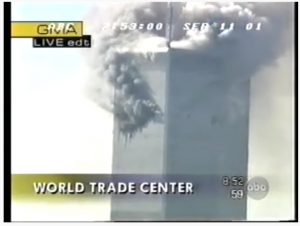
Back in January–which feels like a century ago–I was watching some old television footage on YouTube. It was the live coverage of the terrorist attacks on September 11, 2001 and it stunned me to realize that almost 20 years have passed since that black day.
I said to Tonya, “I wonder when the next Big Thing will be?” She looked puzzled.
“You know…the next ‘Big Thing’…the kind of event that is so unexpected and so staggering that it practically paralyzes us, and brings the world to a screeching halt.”
In my life, it had happened twice. First was the assassination of President Kennedy in November 1963. For my parents and their generation, the assassination was their second confrontation with the next Big Thing. Their first blow had come at Pearl Harbor in December 1941. Now, for both Tonya and I, of course, the most recent Big Thing had been the terrorist attacks on September 11, 2001. In the two decades since the attacks, nothing else had matched their magnitude.
And then, just seven weeks later, all this happened. The next “Big Thing” arrived. The next Global Disaster.
Or is it possible the COVID-19 Pandemic of 2020 deserve its own special category? Does this fit the narrative of any previous crisis? This has been a war with an enemy we cannot see or hear. There’s no Hitler or bin Laden, or Saddam Hussein to focus our wrath upon…Instead we’re left bewildered and confused. Alienated and divided.
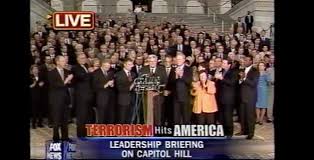
In times past, shared disasters of this magnitude almost always brought people together. It may not have lasted long, but the sudden unity among foes was often the one positive component of an unspeakable tragedy. After Pearl Harbor, the country united behind President Roosevelt. At John Kennedy’s funeral, Alabama’s segregationist Governor George Wallace sat quietly with Chief Justice Earl Warren. The two men shared their grief. On the afternoon of September 11, Democrats and Republicans gathered together on the steps of the U.S. Capitol, locked arms, and sang “God Bless America.”
But this…this is something different.
IN THE BEGINNING…
Even as we heard reports of the virus in Wuhan, back in January, it never occurred to me what was about to happen. An entire planet shut down, like a hyper-extended version of “The Day the Earth Stood Still,” with its economy severely restricted, and most of its seven billion inhabitants quarantined in their homes. I think most Americans were equally surprised.
Once we all recovered from the shock, we searched for explanations, solutions, and especially scapegoats, as is our custom, and even our obsession, these days.
Part of the country supports the shutdown, at any cost to the economy. A part of it doesn’t, despite the health risks. Half the country is blaming President Trump for everything, and the other half doesn’t blame him for anything. The truth, as always, lies somewhere between the two extremes. But knowing that anyone embracing that middle ground ends up being cast as the devil by both sides, we’re uncomfortable looking at any issue with an even hand.
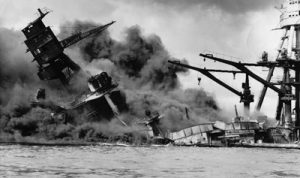
I do know my history fairly well and this country’s preparedness for mega-disaster has never scored high marks. On December 7, 1941, President Roosevelt knew we were at the brink of war with Japan, but it was assumed their forces could never reach our military bases in Hawaii. Consequently, on that fateful Sunday morning, our battleships were lined up like ducks in a row at Pearl Harbor. And at nearby Hickham Field, the planes sat wingtip to wingtip on the tarmac—easy targets for the Japanese Zeros.
On the morning of November 22, 1963, John Kennedy gazed out the window of his hotel suite in Ft. Worth and observed grimly to his wife how easily he could be shot— from a tall building with a high-powered rifle. But an hour later, he insisted that his secret service details stay away from the presidential limousine and the rear bumper.
In late August 2001, a Drudge Report headline read: “Al-Qaeda Plans to Attack NY Skyscrapers with Planes.” Officials of the government were aware of the threats as well. September 11 arrived less than two weeks later.
So as I look at this latest punch-to-the-gut event, I have to wonder if anyone could have significantly reduced the damage we’ve sustained. I have no doubt that mistakes were made, by this administration, and by other governments around the world. But I wonder how the public would have responded if any president, Democrat or Republican, had ordered a complete shutdown of the country in January or February. It’s becoming clear that the virus was spreading wildly through New York and the Northeast during that very early time period, when hardly anyone, Left or Right, was taking COVID-19 seriously.
THE FIRST SOCIAL MEDIA WORLD CRISIS
I’ve wondered how this pandemic would have played out, had it happened twenty years ago, or even just a decade ago, before smart phones and instant access to the news became a part of our minute-to-minute lives (“daily lives” almost sounds antiquated now). What would our response have been, if we’d relied on the daily newspaper and 30 minutes of news at night to shape our opinions and concerns?
It’s possible that these techno-communication advancements have made us safer, allowing us to access information needed for our protection. But it feels less like we’ve been given information, and more like we’ve been drowned in it—with little clarification as to what’s relevant and what’s sensationalism, what’s confirmed and what’s speculative.
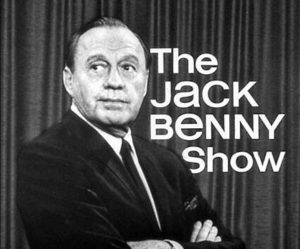
So we turned off the Television news entirely—Tonya threatened to hit me with a plank if I didn’t—and I have found solace watching old baseball games on ESPN Classics and a wonderful collection of old Jack Benny Shows on a Roku channel. Unfortunately, I do still scan Facebook. And it’s disturbing how many of my old Boomer buddies are posting seventy-five to a hundred political memes or links a day. They post them faster than they can even read them! It doesn’t seem like a healthy way of getting through a pandemic.
And I don’t mean to brag, but I have devoted much of my time recently to building a small screened porch as a present for Mrs Stiles. While it’s true that my building skills are not exactly professional grade, and the product of my efforts is more likely to be trapezoidal than square, I have felt a sense of accomplishment–of doing something–that I wouldn’t if I were dedicating my time to flipping between Hannity and Rachel Maddow all day.
Generally, social media does seem to be shaping our views and influencing our concerns. What would we be doing without Facebook or Twitter or whatever platform is popular at the moment? Has it helped us, or has it created such an aura of fear and mistrust that we’re consumed by it faster than the virus itself? I frequently see stories on the internet that compare this pandemic to the Spanish Flu of 1918, and as recently as a week ago, I was hearing some expert suggest that we might still face similar death counts with COVID-19 (The Spanish Flu killed as many as 50 million people world-wide).
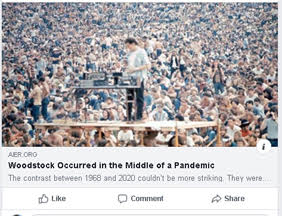
Then one day I saw a story that claimed our last pandemic occurred in the same year as Woodstock. I was alive and kicking in 1969, and so I explored the claim more fully. And to my surprise I discovered that, indeed, in 1968 and 1969, the “Hong Kong Flu,” or the H3N2 flu, was a full-scale pandemic that probably started on the Chinese mainland, then spread rapidly across Asia, to Europe and the United States.
The virus reached California in September 1968, via returning troops from Vietnam, but didn’t become widespread in the United States until December. The Centers for Disease Control (CDC) ultimately estimated that the virus killed one million people worldwide, from its beginning in July 1968 until the outbreak faded during the winter of 1969–70. About 100,000 people died in the U.S, mostly in Americans older than 65.
According to Wikipedia:
“In Berlin, the excessive number of deaths led to corpses being stored in subway tunnels, and in West Germany, garbage collectors had to bury the dead due to insufficient undertakers. In total, East and West Germany registered 60,000 estimated deaths. In some areas of France, half the workforce was bedridden, and manufacturing suffered large disruptions due to absenteeism. The British postal and train services were also severely disrupted.”
It’s almost impossible to avoid seeing the similarities in the Hong Kong Flu to COVID-19, from its origins, to the way it spread, to the people at greatest risk. The US death toll from the 1968 Hong Kong Flu (100,000), as a percentage of the population, was similar to what we’ve seen so far with COVID-19. In 2020, the US population stands at 330 million; Adjusted for today’s population, the Hong Kong Flu would have killed about 165,000 Americans. As of yesterday, the United States has lost 100,000 Americans to COVID-19.
In any case, I have just a glimmer of a memory of the 1968 pandemic. I recall that the Apollo 8 astronauts were quarantined prior to their December launch to the Moon, to avoid contracting the HK Flu, in much the way the SpaceX crew has been recently isolated for their May launch to the ISS. I’ve read that some school districts across the country did shut down during the ’68 pandemic, in response to increased infections. But the country was reeling from the Vietnam war, assassinations, and race riots. Perhaps a pandemic seemed mild when compared to those kinds of events. Certainly, very few Americans were as alarmed by the HK Flu as they have been by the Coronavirus, and no draconian measures were initiated to deal with it.
THE CACOPHONY of CONFUSION, CHAOS
Whatever happened in 1968, and whether the response taken then could have been successfully adapted today, we’ll never know. What we all realize is that, from late February right up to this morning, the steady flow of “information” in the form of contradictory warnings and precautions, conflicted data, and subsequent denunciations and condemnations, has done much to confuse and bewilder and alienate all of us.
Tonya goes into much greater detail in her companion essay, but our lives in rural Kansas are so far removed from mainstream urban America that, in many ways, our world has not changed much. The roads were empty before COVID-19 and have remained so. But even our tiny rural community has felt an impact. Schools closed almost overnight. Our high school basketball team was at the State Tournament, and had won its first game. And then…boom. their season was over. Our restaurants and movie theater closed. We are as far removed from the vortex of this nightmare in New York as one can imagine. But the lockdown rules here were the same, and that has been a constant source of frustration and even despair.
Consider some of the precautions that have been passed along to a mind-numbed public since Day #1…
* We need to wear masks
* We don’t need to wear masks.
* We DO need to wear masks after all.
* Yes, a couple months ago, you would’ve been arrested for wearing that mask in a store. Now you might be arrested for NOT wearing a mask to the store. And stop being confused about the masks.
*Here’s a mask that is, “printed with zinc and silver metal dots, and made of a fabric that generates a low-level electric field.”
* Social distancing means staying at least six feet away from other people.
* But maybe we need to stay farther apart, like 27 feet.
* But maybe six feet is okay after all.
* But maybe those droplets can be blown even further, across aisles of a grocery story, if one sneezes and causes the trajectory of his droplets to launch skyward.
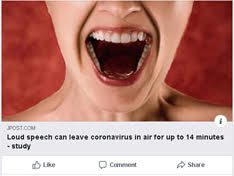
* Also…Talking loudly can spread the virus farther than six feet
* But people who talk softly force us to violate the six foot social distance minimum, because we can’t hear a damn thing they’re saying.
* We don’t need to worry as much about social distancing if we’re outside.
* But if we’re outside, even a two mile per hour breeze can carry COVID-laced droplets as far as 50 feet.
* But you’re probably safe outside.
* CDC says we need to sanitize our hands every time we touch an alien object.
* CDC says that the virus has been known to survive for days on different surfaces.
* But then CDC says that actually, it’s very difficult to catch the virus from surfaces.
* But the CDC also reports that the virus can spread on surfaces and maybe we shouldn’t take the last warning to heart.

* Ellen Degeneres is really mean.
* Ellen Degeneres is not mean.
* CDC recommends that we social distance from our cats and dogs.
* Or maybe cats and dogs aren’t that great a risk after all.
* Cats say they couldn’t care less, one way or the other.
* No one can decide if we live in “challenging,” “difficult,” or “uncertain,” times, but everyone agrees it’s one of those three.
So…it’s sort of been…you know…like that.
“IT’S THE DENSITY, STUPID.”
At the heart of our dilemma and debate, is of course this:
Many Americans feel that the cure has become worse than the disease, and want the country to re-open. Millions are out of work, bills are due, thousands of small businesses have already gone broke and many more may follow. Their children have missed months of school.
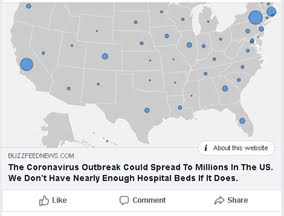
Many other Americans still feel it’s not safe, and that opening the economy prematurely will result in untold numbers of dead as the virus regains strength and sweeps across the continent and the world. And that consequently the economy will suffer even more.
Those who DO want to re-open the country regard those who don’t with utter contempt.
Those who do NOT want to open the country regard those who do with utter contempt.
I am probably more of a Libertarian at heart than I previously realized, and so the idea that any government could tell its citizens that they can’t work, that they have to stay home, that their children’s education would be suspended, while offering NO real remedy for the ensuing damage, both economic and emotional, seemed outrageous to me. I would have thought such a move was impossible.
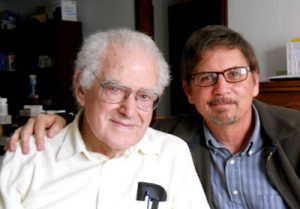
But both narratives still tear at my conscience and my sense of morality. As we know, the Coronavirus targets the elderly more than any other age group. The mortality rate for people under 40 is a fraction of one percent, while the rate for those over 70 is staggering. Throughout my life, my dearest and most beloved friends have been men and women who were at least a generation older than me….Herb Ringer. Reuben Scolnik. Murray and Dot School. Doc and George Bell…all of them were like family to me and they are already gone. Now that my age alone places me in a higher risk category, I find the thought of losing more of those special people especially painful.
On the other hand, I’m not sure my mother would agree. She is going to be 93 in September. She is confined to a nursing home in Kentucky which is in total lockdown. Consequently she hasn’t seen any of her family since early March. She isn’t able to spend time with other residents. Her health is, in most respects, terrible. She can barely walk. Lately, she spends her time sleeping or watching television. Mom can’t text anymore or use the internet to communicate with us and she often doesn’t hear the phone. In fact, a while back she accidentally fiddled with her settings and now almost all incoming calls go straight to voicemail, which she doesn’t know how to access. And no one at the facility seems to know how to fix it.
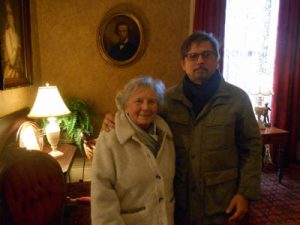
But she can still place calls, when she remembers, and so I hear from her a couple times a week. Recently, she has sounded ever more desperate for all this to stop. In a call on Memorial Day, she said, “I am 92 years old. What are they trying to protect me from? I’ve been ready to go for a long time and I’m better off than most of the other women in here! And yet this place says it wants to ‘protect’ me. From what? Dying of old age when I can’t even walk any more?” She added, “I miss your dad.”
My mother is not grateful that she’s being isolated like this in what could be the last days of her life—days devoid of companionship and conversation. Months spent alone. She doesn’t feel protected. She feels lonely.
I don’t mean to generalize from her feelings. I have other friends, well into their 80s, who can run rings around me, physically and mentally. They have many good years left and I don’t want them taken down by this invisible curse. That’s why, when I first learned of the COVID-19 and realized that the virus mostly attacked older people and those with serious health issues, I assumed that the country’s first priority would be mobilizing to protect them. Americans over 65 represent about 17% of the population and many of them are retired. Almost all of them have better sense than their Millennial and Gen Z counterparts. They’re smart enough to heed health warnings with care. The government could have found ways to augment the incomes of seniors and those with health conditions far more effectively than they’ve helped the rest of us, struggling to keep above water with a $1200 check. It would still have been a monumental task to work out the logistics, but would it have been more difficult than closing the country down and leaving 40 million unemployed?
My heart goes out to those who have lost parents or grandparents, or aunts or uncles, or best friends. I tend to believe the oldest generations are the best among us. And there is still much to learn from them. But I also understand why millions are desperate to return to work. And to suggest that they don’t care about the suffering and death of others is grossly unfair. If I have seen one repeated sentiment that infuriates me, it’s the cruel, condescending mantra, aimed at those wanting the country to re-open:
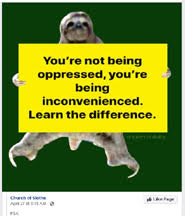
“You’re not being oppressed, you’re being inconvenienced.
Learn the difference.”
When applied to some of those extreme AR 15-toting protesters, it may be fair. But it’s a gross misrepresentation of the rest of the country. It suggests a complete disconnect from the real world and the people who keep it running, and a level of insensitivity that is simply beyond me.
In our own small part of the world, we’ve already seen several businesses call it quits. More are sure to follow, even out here beyond the stump. Across vast parts of rural America, the virus has failed to show up in any significant numbers. Hundreds of rural counties have been virus-free. It makes it difficult to relate in any personal way to those trapped in the heart of the pandemic. And that has been a significant part of the problem.
The pandemic is real and deadly, but in a country this large and diverse, when it came to combating COVID-19, one size never fit all. It was clear from the beginning that the Coronavirus thrived in heavily populated parts of the world. It loved the New York subway system. It was unstoppable in tight, dense crowds. That’s where the horror of this disease has been so keenly felt.
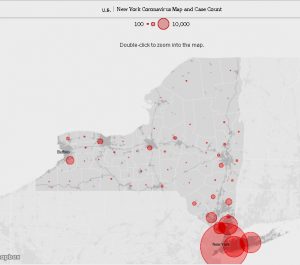
New York is the vortex of this pandemic and according to CDC stats, has a death rate of 1519 per million. A horrifying ratio. By comparison, Wyoming has only seen 15 deaths, and, given its total population is less than a million, their rate per million is higher than the total number of deaths, at 26. But if you dig deeper into the statistics, the virus appears even more concentrated. As of May 27, the state of New York has seen 29,241 deaths from COVID-19. But of that total, 26,765 of those deaths occurred in just four counties. New York state’s total area comprises 35 million acres. Those four counties occupy less than 7% of it.
That has been the case everywhere. Even in rural areas, the hotspots are a product of density. Early on, one of the hardest hit parts of the country were the ski towns in Colorado. One friend of mine in Gunnison explained how the international ski crowd kept flowing into the resort well into February. As the ski season wound down, a traditional town-wide ski party brought that mass of people together, elbow-to-elbow, and just weeks later, one of the country’s first Hotspots appeared in his community.
Ski towns, like meat-processing towns, are a notable exception to the spread out “Rural American” lifestyle. But many Americans can’t differentiate between a place like Aspen and the thousands of rural communities that survive across the less populated parts of the nation. When the Governor of Wyoming was chastised and shamed for not imposing stricter quarantine rules, he replied, “We’ve been social distancing out here in Wyoming for 135 years. We don’t need anyone to tell us how to do it.”
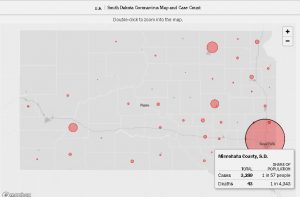
Likewise, in South Dakota, when an outbreak of the virus swept through a meat-processing plant in the far southeastern corner of the state, their governor was condemned for not issuing statewide stay-at-home orders. But again, a closer look at the numbers suggests some logic to that decision. Of the state’s 54 deaths (as of May 28), 45 of them have occurred in Minnehaha County, where the Smithfield plant is located. South Dakota spans 50 million acres; Minnehaha covers 520,000 acres, barely 1% of the state’s total area.
Even out in my old home state of Utah, where the number of COVID deaths just passed 100, eighty-six of them occurred in Salt Lake and Utah counties, the densest population centers in the state. They occupy less than 4% of the state’s 54 million acres.
The densely populated places and the sparsely populated places are not sharing the same experience.
“WE JUST WANT TO WORK.”
There are two very different lenses through which our country’s citizens are viewing this phenomenon. And the refusal to acknowledge that difference is what continues to tear us apart. Perhaps worst of all, we haven’t found a good historical experience to compare it to. We are in uncharted territory here.
Again and again, since Day #1, we’ve seen efforts to compare our current crisis with past events. We try to find some comfort in believing we’ve experienced disasters like this before, that we’ve made similar sacrifices, and that we can take comfort in knowing we will also survive. One frequently cited example was our collective commitment in World War II. But the correlation doesn’t hold together.

In WWII, the millions of soldiers who joined the armed forces and went to war to defend our country left their homes and families with the unbridled and unwavering support of its government and the people. They endured unimaginable hardships and suffering; almost half a million Americans never came home. They suffered on a scale far beyond what we’ve experienced.
On the other hand, those soldiers who survived the war, including my dad, came back to the extraordinary appreciation of a grateful nation and its government. Those vets were able to take advantage of the recently passed GI Bill, which provided significant government support, including an assured college education, and GI loans for buying first homes. The country also welcomed home its 11 million soldiers to an already robust economy.
Some had worried that a post-war depression might kill that economic boom, forgetting that Americans had been fully employed and saving their money for almost five years. The reward for their service and sacrifice was a promising future. What we see now is completely the opposite. Now, scores of millions of Americans have had to stop working and stay home. Few are questioning the health risks but they’re worried. And nothing has been promised for their future, for their prosperity. And so all that most Americans are asking for is the ability, and the right, to WORK...They want to make a living. Feed their families. Be productive. That’s it. Nothing more. For the first time in this country’s history, wanting to work has become a desperate request, when for almost 250 years, it was an assumed right.
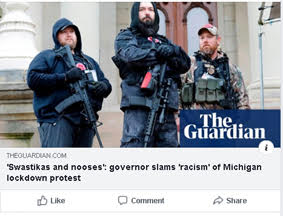
As unemployment skyrocketed to levels approaching the Great Depression, with over 40 million out of work, a backlash was inevitable. A number of the protesters who took to the streets in Michigan, New Jersey and elsewhere were extremists who clamor for the spotlight. They usurped the deeper and more honest sentiments of millions of good, decent people whose fears are real. A relative handful are acting stupidly. But the vast majority are just plain scared.
Now, even as we appear to be emerging—maybe—from this nightmare, millions of Americans have no idea how they will pay their past due rents or the grocery bills they’ve added to their bloated credit cards. Or utility bills. School books. Clothes. Car payments. What money was previously saved is mostly gone. Unless you have a government funded job, most Americans are just out of luck.

I have a friend who is a server. She has worked for years in the restaurant industry and was most recently at a Denny’s somewhere in Utah. She doesn’t want to be named, for obvious reasons, so for the purposes of this story, I’ll call her Mae…
Mae was initially laid off in March, of course…So were the bus boys and the dishwashers. So were half the cooks and cashiers. Eventually a few were offered part-time work. I asked Mae if she could give us a first-hand account of her life these days. Here in part is what she told me…

When this started mid March I was given a choice to work or not. Most collected unemployment, I chose to work. Sadly my wages remained $2.13 an hour, standard for Utah servers. ‘To go’ services are usually dreaded, since tips for door dash etc go to the drivers not the servers. Being restricted to takeout-only cut my wages to maybe 25% of normal.
But mentally it was good to work and feel useful. Our restaurant operated on a bare bones staff but luckily for us we had truck drivers as a built in clientele…. I know the truck drivers are fed up with it and want it to be over. But they’ve been out there through all of this dealing with the changes from state to state so it’s been rough. And yes, they are good tippers but more importantly, they’re generally a pleasure to serve.
There has been no additional compensation from Denny’s. None. From the start I was told I would receive minimum pay plus tips if I worked. My first check for 2 weeks was $33….Even management pay was reduced from salary to an hourly wage and their hours were cut.
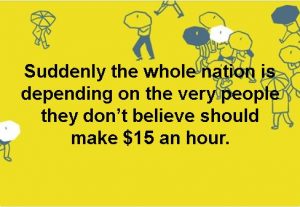
No extra benefits were offered. In fact it has turned out the opposite way. Even those who fear coming back to work aren’t given a choice. It’s either return now or lose your job unless you have a doctor’s release… Workers are getting their hours cut already because the ‘numbers’ don’t call for more help even in this difficult time. Running the restaurant with these restrictions is proving difficult so we will see how this all works out.
This has been stressful for the majority of us and yes, drinking is up. Even though I chose to work to avoid the anxiety of inactivity, the worry of not knowing how and when this will end is with all of us. The most worried ones are the moms with young children.
Just in Mae’s world alone, consider the domino effect— as the demand for commercially prepared food declined, the demand for wholesale deliveries shrank too… transportation needs fell. Truckers were laid off. Production facilities closed. The energy industry came to a standstill, with thousands more out of work…For months, crops were rotting in the fields because they couldn’t be sold to the wholesalers. Millions of gallons of milk were dumped that would have gone to restaurants and schools. Ranchers started to seriously consider putting down their herds if they can’t get them to market, or if the processing plants stay shut down.
But here’s the bigger long term worry. Giant corporations, who have the resources to weather this nightmare, are no doubt quietly delighted, waiting for the fallout of small businesses. The longer the shutdown lasts, the easier and cheaper their takeovers will be. Watch for more collapse and subsequent consolidation. Look for chains to keep replacing “mom and pop.” It’s been happening for a long time already, but this will accelerate the demise.
Finally, and perhaps most troubling for me is watching the continued erosion of our privacy and personal freedoms. As if both weren’t already in extreme jeopardy. Particularly frightening is how willingly we give them away. From what I can see, most people in this Brave New World of 2020 prefer security to freedom anyway—or else they don’t understand how easily a ‘temporary’ increase in governmental power can become the ‘new normal’. Those of us who don’t adapt well may find our values are becoming antiquated notions.
“IT’S ABOUT PERSONAL RESPONSIBILITY” (OR IS IT?)
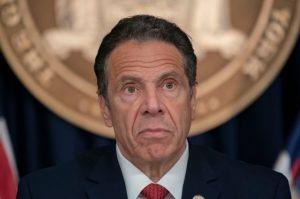
Ten days ago, as the hardest hit part of the country made tentative steps to re-open its economy, Governor Andrew Cuomo urged the state’s residents to remember, “This is all about personal responsibility, and it has been since day one.” And, for sure, that has been the essential question and dilemma since the pandemic first arrived over three months ago. Are we capable of being “personally responsible?”
As it applies to the virus, all of us knew who bore the greatest risk of a serious or fatal outcome as a consequence of exposure to CV19, and how those at risk needed to be isolated and protected. Right or wrong, the lockdown measures assumed that collectively, we would not display the “personal responsibility” needed to protect each other.
As a result, governments across the planet invoked unprecedented, draconian measures to protect the quarter of the human population at great risk from the other three quarters at low risk. Governor Cuomo stated a month or so ago that if the shut down “saves just one life, then it will have been worth it,” a statement that has been both defended and denounced by our permanently polarized citizens.
Now as the states here in the U.S., and other nations around the world, attempt to re-open, its leaders are offering those same admonishments about personal responsibility. And clearly, the public response has been mixed. While most of us seem to be trying to do the right thing, giving other folks a wide berth and wearing masks when needed or requested, we are also bombarded daily by images of crowded beaches and packed stores and elbow-to-elbow sidewalks.
Those who think the country is re-opening too soon cite these examples as proof that the government mandated closures need to stay in place until we know the country is out of the woods. Some government leaders have even insisted that a complete re-opening cannot occur until an effective vaccine has been developed and approved.
And there lies the dilemma— what if it becomes clear that most Americans are NOT willing to take personal responsibility? What if, after months of frustration, Americans in great numbers violate the established protocols established, and what if consequently, we do see a second wave of the virus hit the country? What if the infection and death rates soar again? Does the government once again shut down the whole economy to protect its citizens from themselves? How far can any governing body go to control its citizens from hurting themselves and each other?
Obviously we are a nation of laws that were created for that very purpose. We have laws that offer penalties for all kinds of “bad behavior,” from shoplifting to murder. We have rules that keep us from driving 90 mph on the highway (except maybe in Texas?). We have health regulations that try to assure us our water is safe and our food is not contaminated. And with few exceptions, we accept and appreciate those rules and restrictions.
But how far can a government go to protect us? How long can it tell us not to work, or not send children to school? And more to the point, how willing are its citizens to accept such controls? We don’t live in China. This isn’t an authoritarian state. If it were, I wouldn’t even be writing this article. Compliance with rules isn’t a problem in countries whose citizens have no personal freedoms to begin with. But what about the United States and other democracy-based countries –is security becoming our society’s most valued “right” ? Or is our freedom to make personal choices, for better or worse, more indispensable?
I saw an interesting poll recently, asking citizens how they felt about re-opening the country. The results were surprising: People over 50, those in the higher risk group strongly supported plans to re-open. People under 40, who were least at risk, were strongly opposed. That may be an indication of the direction Americans want to go in the future.
Meanwhile, people keep dying from the virus. Over a hundred thousand already. Millions of others worry about their economic future. Some contemplate suicide, or escape from their troubles via drugs or booze. And some genuinely search for a better way to live in these “difficult, challenging, uncertain” times. As I asked in the beginning—now, what next?
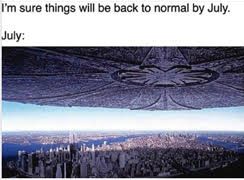
Jim Stiles is Founding Publisher and Senior Editor of the Canyon Country Zephyr.
To comment, scroll to the bottom of the page.
Zephyr Policy: REAL NAMES ONLY on Comments!
Don’t forget the Zephyr ads! All links are hot!
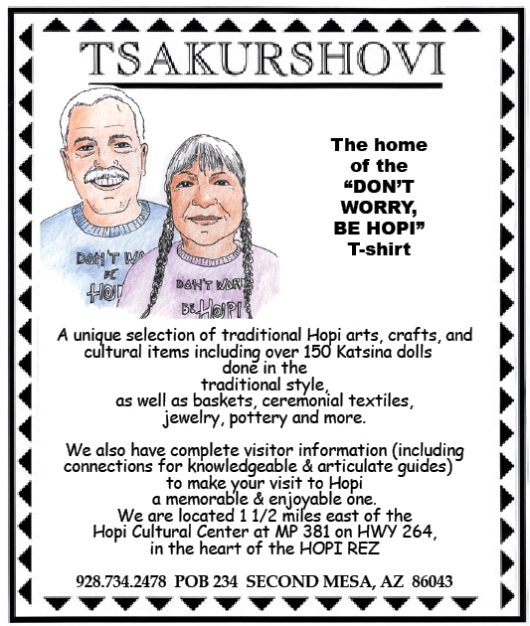
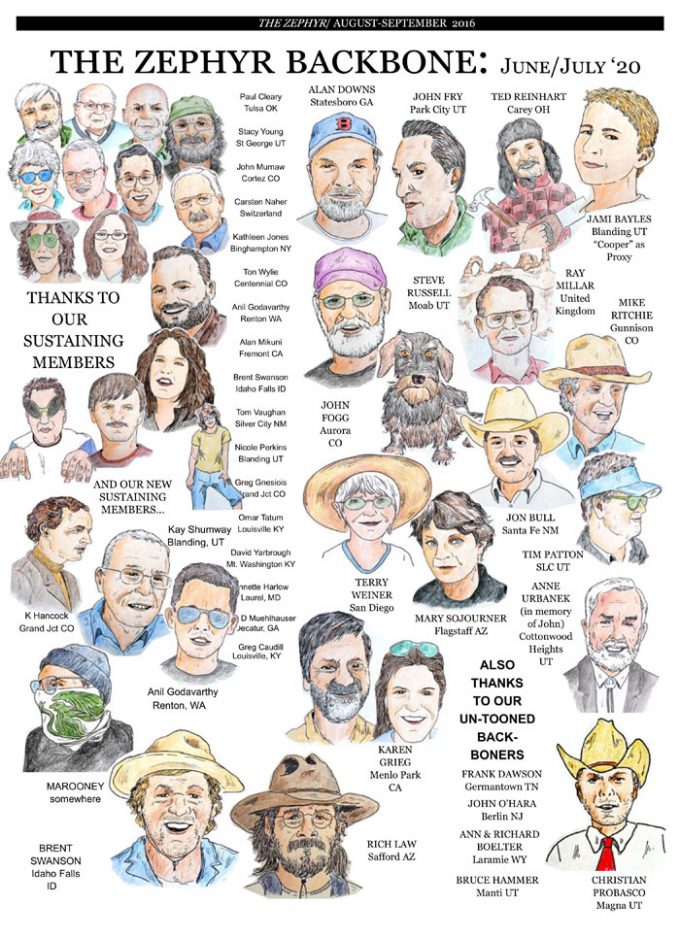
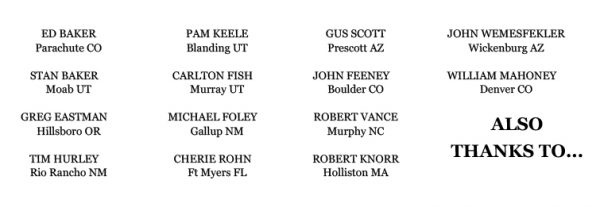


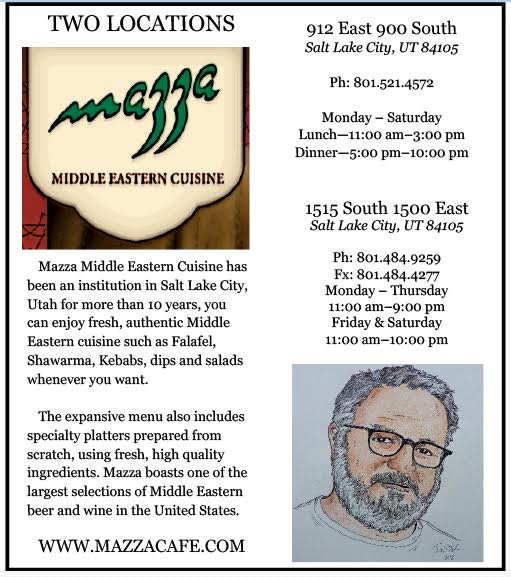

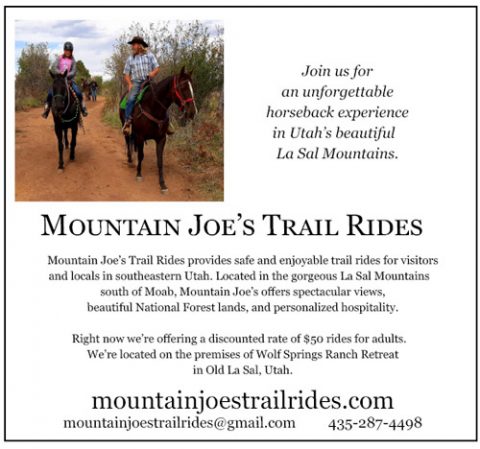
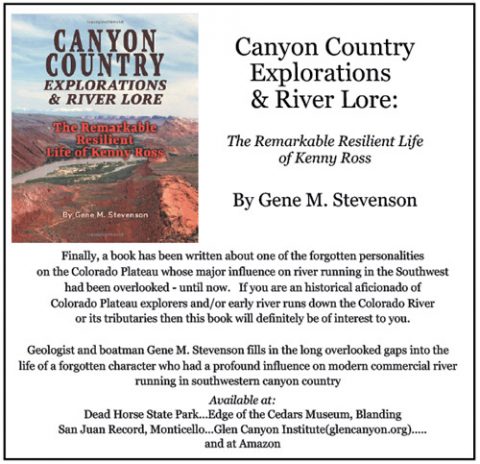

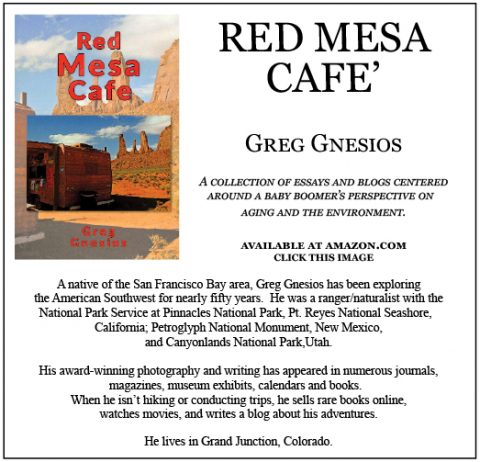
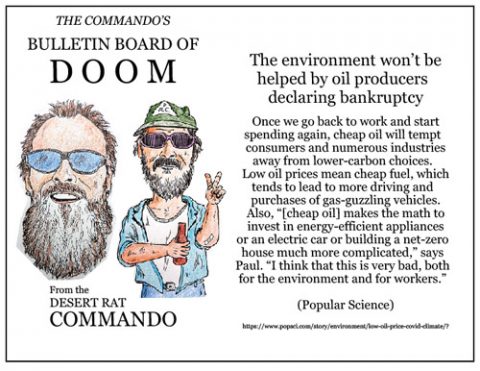
Jim,
Your observations here capture the ambivalence I have been experiencing throughout this time. There are all of these false dichotomies, fueled by conflicting and changing information (narratives?). This massive grey area we are in right now is not easy to clearly explain. I appreciate your attempt.
well…. the density explanation gets a big “yes, but” from me. It certainly ignores the experience on the Navajo reservation, where per capita infection rates rival or exceed those of NYC. It’s hard to spread people much more sparsely across the landscape than northeastern Arizona (+ parts of SE UT and NW NM). Whether the article ignores this because it is inconsistent with the thesis of the article, or just….because that’s just what we do when it comes to the reservation, it’s certainly a problem with the argument. Amidst the confusion, we all gravitate toward simple answers. Reality is always more complex.
GREAT piece, Jim! Thanks. these are difficult times. I wish I could hit the road. Santo says hi.
Brian Gatlin…I didn’t mean to ignore the COVID-19 crisis on the Navajo Nation, but there is so only much I can cover, even in a 5000 word article. But as you know, regarding the breakout on the NN, there are other issues at play. Underlying health conditions, as we mentioned more than once, dramatically increase chances of infection. It’s a fact that diabetes and heart disease, and other health problems are a real issue on the Navajo Nation.
But most critically, what I have read from multiple sources, is that the rapid spread of the Coronavirus on the Navajo Reservation stems in great part from the fact that many of their homes are occupied by multiple generations of their families, which means when a younger person who picks up the virus, he may be asymptomatic, but puts his older family members at risk..As NPR reports:
“Given that the Navajo Nation is 27,000 square miles — seven people per square mile — social distancing may seem easy. But while the population is spread out, multiple generations often live under one roof or within the same small group of homes. Isolating a loved one, especially if they are sick, simply isn’t part of Navajo culture.”
Finally, for more than a century, it has been an intrinsic and well-justified lack of trust in White people to accept and follow our imposed restrictions, even if they are supposed to help. It’s been evident these past few months, as many Navajos violated stay at home orders, and even the mandates from the NN’s own leaders to obey curfews. It’s why the mayor of Gallup and the governor of New Mexico finally invoked the Riot Act to shut down the city altogether and turn everyone away.
I have many older Navajo friends who have pleaded for months for their younger counterparts to self-quarantine, but to little or no avail,.
So I completely agree, there are no simple narratives.
This is one of the more thoughtful essays I’ve read on this topic, Jim. The essay is a conscious effort not to polarize. Instead, you have risked a more or less centrist perspective. And yes, this is a risk. Unfortunately, so much of our political language has been forced into unbending dichotomies, in which the language of one perspective excludes us from the discourse of another. However, to agree with a part –a mere part I might say—of one perspective should not eliminate our participation within another, least of all when there are shared sensibilities. When a society falls into the language of winner take all then that society can potentially fall into the horror of an actual winner take all. For most of its history, the U.S. has been fortunate not have this happen. Consider, for instance, how throughout our history we have changed political parties without violence. This is comparatively rare for a nation state. Currently people are failing to be generous with each other. At some point the language of divide tips into divide. The language of hatred evolves into hatred. Or, as is the case, not to mention the tragedy of COVID-19 within the Navajo community, particularly among those individuals who live on the reservation, is not to ignore the community or to write with flippancy or neglect about problems therein. Why presume such is your position? My point is this: you have written a careful essay, and you have waded successfully through the contemporary perils of political discourse. As for us, as readers, we should read generously. Which is not to say agree with everything in a piece, but to realize we do not always share the same intentions. Agree or disagree by all means, but we should come to the table, so to speak, with a willing heart. It’s a difficult way to read. It’s complex. Anything less is too easy.
Jim, I love they way you write. Your flow of words is smooth and not jarring but yet makes some powerful points. As an older American I very much appreciated what you wrote about your mother. Having recently been in an interview that involved a Navajo Medicine Man it is easy to see how the problem on the reservation has much to do with cultural beliefs and practices. The big divide in this nation has become more fully exposed by the events of the last week. What worries me the most is the divide, which you mention in your article, between generations. This does not bode well for the future.
Keep up the good work that you and Tonya are doing.
As always, beautifully written and concise. I could split hairs, but I am too distracted by military helicopter doing rounders of my neighborhood. BTW, the us military has confirmed encounters with UFOs. There was a collective yawn.
Godspeed
Thanks, Jim. As always, you provide a more reasoned (or at least less hysterical) perspective.
At the risk of sounding like (another?) curmudgeon, I do think there are some fundamental differences about this crisis.
First, fear. Among the events you cite, this is the first where a good portion of the official message, echoed by regular and social media, is that we should be afraid. Not vigilant or dedicated or even patriotic, but fundamentally afraid. We have gone from “The only thing we have to fear is fear itself” to “we are all going to die unless everyone complies (with the order of the day)”. The tin foil hat crowd claims this is just a ramping up of the deep nanny state, but even trying to see the promotion of fear as a Noble Lie represents a big change in our national narrative.
Second, fragility. We have entire generations raised in a new safety culture where risk minimization is the prime directive. Instead of people raised with bumps and bruises, both physically and mentally, we have delicate flowers who have never been confronted or challenged with any issue or opinion not in alignment with their curated, coddled lives.
Third, admittedly a bit tired, is how divided and partisan we have become. But the official management of this crisis only amplified those differences. Work from home! Sure, for those who have information jobs and somewhat privileged situations. Not so easy for people who actually have to touch their work (and probably lack the financial back ups of the first group). Others have pointed out different perspectives on risk, tying back to my second point. People who have served in the military, who work in physically challenging and even dangerous occupations, who have seen death first hand from any number of causes taking people of all ages, and just plain live disrupted lives, can look at a disease where the risk of death might be one in a thousand, and decide to accept that risk in order to keep their lives going. People who have never known any serious threat are likely to panic and demand total shut down. Now just leverage these differences with some political spin…
Great article. Thought provoking. Thanks
Jim thanks for the “visit”. As I read your ideas I could picture you and I talking back on Main Street. Exchanging ideas and enjoying the process but not necessarily solving anything. I read the article because I trusted that you would look at the situation from all sides while trying to make sense of it. I was not disappointed. Thanks and even though nothing has changed, I feel better somehow.
Ask a nurse treating Co-vid patients what they have experienced, what they know. Like one of my daughters. Ask a doctor who has been treating patients. They won’t use 5000 word limit to explain the horror.
The pandemic has exposed the flaws and faults and inequalities in our country. Meanwhile, the most corrupt and immoral regime in our history is bent on destroying the Post Office, the Justice Department, our voting system, and stripping us of all our environmental protections. Bent on destroying what we regard as our democracy.
Meanwhile, a servant of the Anglo-European power structure got caught killing a member of an oppressed minority in the light of day, sparking a rebellion of the decent, resulting in more police brutality. If a significant reform in spirit and law does not follow, the American Empire’s descent into failed state status will accelerate.
Meanwhile all of Nature is responding positively to the decline in human activity.
What Bob Krantz said.
I’ve been of two minds about this whole experience. Looking at it from a social perspective, yes, it’s important to protect the most vulnerable among us. But then looking at it anthropologically (which does not preclude empathy, so please, don’t attack me as a sociopath), there have been periodic epidemics which killed a lot of people but left everyone else stronger.
The current over-emphasis on “keeping us safe”, whether you’re talking about from terrorists or from a virus, is not doing us any favors in terms of encouraging resiliency, either as individuals, as a species, or as a society. Resiliency is generally regarded as one of the most important survival traits.
You explain the diverse feelings surrounding this pandemic as well as anything I’ve read. Thank you, Jim. Writing about it must have been tremendously difficult. I’m a centrist. And you echo many of my feelings too numerous to mention. You stated what that gets one: “…anyone embracing that middle ground ends up being cast as the devil by both sides.” Thanks again for your shrewd observations. Oh. And now we have the race riots too. I pray we’re not headed for a civil war. Hope springs eternal.
As a retired journalist, I find coverage of the pandemic, or about anything else, so rife with bias and advocacy journalism–like everything we get from “Lame Stream” media (Forget social media! That’s a Big Media diversionary tactic–that it’s little wonder that so many are flaunting the Blow Dry Crowd in Big Media and are refusing to do ANYTHING they’re told, including wreck the economy by hiding in a hole for the next 2 or 3 years.
I’d say it’s time for a whole hell of a lot less focus on social media and a whole hell of a lot more focus on what media deregulation–thank you Bill Clinton and Ronald Reagan–did to break EVERY PROTECTION once in place to ensure that our democracy had reliable news sources. That the Fourth Estate itself seems so unaware, particularly appalls!
These two individuals gutted regs long in place to ensure fairness (the Fairness Doctrine) in media coverage, including (Yes, boys and girls! It’s true!) freedom from bias, requirements to cover ALL the news (no news blackouts, something now routine) and, duh, fairness. (If these still stood, not a network out there would have a broadcast license based on what they’re doing.
Regs keeping media broken up and highly competitive–essential for the Fourth Estate–were also flushed, meaning a rapid centralization into the hands of just a few trillionaire companies, such as Disney, Comcast, Rubert Murdock’s rags all working incestuously (This is obvious to anyone not watching T.V. from behind their own front teeth.) to the detriment of our free society. Just think, oh goodie, ALL our major info going through a narrow, tightly controlled bottleneck owned by these folks!
If it doesn’t scare the bejesus out of you, for example, that those who CONTROL ALL MAJOR MEDIA, also own Big Military(and Big Almost Everything Else) and, by evidence, used “their” media to suppress full discussion, debate and reporting on the merits of going into Afghanistan, etc., well, you’d better start paying attention.
As is, our media, by every applicable metaphor at national and international level is substantively nothing but one huge propaganda machine, currently keeping us absolutely distract–though not INFORMED to any reputable standards of journalism–by black lives matter and COVID-19. How tragic that they can shove a whole lot of culpability by media in problems with black inequality, for example, under the rug, as we instead are all so busy watching a lot of angry people busy tearing down our history and “cleansing” our culture ala European fascism in the 1930s, that we’re all so distracted and preoccupied with THEIR conversation, that no one seems to notice. Quote: There’s a sucker born every day,” P.T. Barnum. Meanwhile, Norah O’Donnell is doing commercials assuring us that, gosh, we don’t want press regulated (She SHOULD say REREGULATED.) because then apparently they couldn’t continue doing what they now are: Exactly what they want!
“what all the above said”! like someone said, one of, if not a candidate for best summary of the present whirled-wide poo-poo encountering the metallic whirring device. and, yeah, like you warned, there were a lot of werdz. i read most of them, some of them twice. KEY-PIT-up !
After reading this again, I must say, what do you have against Brussels sprouts? What did they ever do to you?